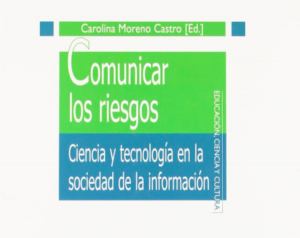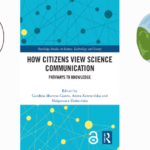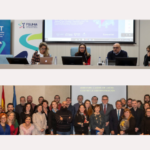Communicating the risks. Science and technology in the information society
ANA SERRA//
The coronavirus pandemic has put on the table, among others, the essential role played by the media in times of crisis when health and safety may be threatened. The analysis of contemporary scenarios of sanitary and environmental history that are included in Communicating the risks. Science and technology in the information society offer a learning that can contribute to institutions, journalists and disseminators to effectively communicate during this global crisis.
Risk communication was originally conceived in the 1960s as a communication aimed at “informing non-experts”. Since then, the approach to risk management has been expanding. Today it is indisputable that, in the communication process, the scientific community and regulators must take into account their audience. Furthermore, risk communication must be a foundational element that promotes dialogue among a multitude of actors and their perspectives (B. de Marchi) while helping the public to understand the role that science plays in certain situations. Media, therefore, must play an exceptional role: contributing with information that is not only accurate but also correct and useful (C. Moreno).
Media, therefore, must play an exceptional role: contributing with information that is not only accurate but also correct and useful
Communicating the risks, how and for what?
Trust is perhaps the value that can be harmed the most by mismanagement of risk communication. And trust is the foundation of legitimacy. Therefore, failures in risk management and communication can significantly undermine the legitimacy of public institutions, leaving citizens disoriented and not knowing where to go (S.Hilgartner).
In scenarios like bird flu, individuals and communities know the risks and how to avoid them. In situations like this, alarms caused by lack of information could cause further damage (Camaño-Puig). The challenge in intensive situations like this is to achieve a difficult balance: a powerful message capable of overcoming the laziness of the public, but not too forceful to raise unnecessary fears. The objective is to generate “mutual trust, where the public is expected to participate and collaborate from the beginning and create the appropriate level of fear”.
The challenge in intensive situations like this is to achieve a difficult balance: a powerful message capable of overcoming the laziness of the public, but not too forceful to raise unnecessary fears.
However, communication should not be confused with the mere dissemination of information (Morales-Olivas). Therefore, more important than the method is the effectiveness of communication. And for it to be effective, it must be done through quick and accessible procedures, in the most systematic way possible and trying to give precise instructions on the behaviour to be followed by the audience and by health professionals.
As prospective solutions for communication in times of crisis for uncertain times, Gil-Calvo proposes in Communicating the risks. Science and technology in the information society to assume, first of all, the evidence that there is no total and complete prevention: Many of the crises cannot be foreseen, the risks are almost unpredictable by definition. However, this does not mean resignation, but requires preparation to minimize the extent of the crisis once it occurs. And this implies creating protocols capable of giving multilateral responses, to involve both the citizen sectors and the media and authorities. Therefore, it is essential that the answers are transparent. Avoid that anyone can feel uninformed and believing that something is hidden from them. The aim is that everyone has a complete knowledge of both the triggering events of the crisis and the alternatives that are open to overcome it. For this, it is necessary to have the media, necessary cooperators.
You can access the book here.









